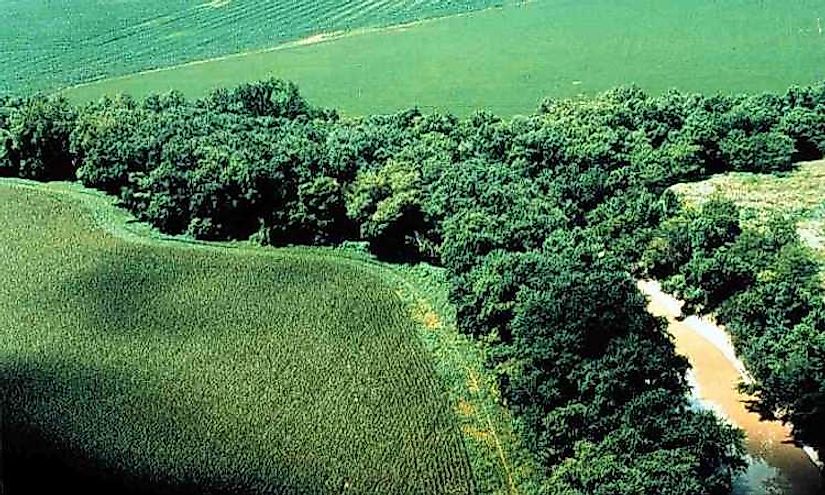What Is A Riparian Zone?

Definition Of A Riparian Zone
The word riparian is derived from Latin language word ripa which means river bank. Riparian zone is also known as riparian buffer zone, riparian woodland, riparian strip, or riparian forest. Riparian Zone is a transitional area between land and a river or stream. The zones are important in ecology, environmental management, and civil engineering as they have a critical role in plant biodiversity and soil management among others. They are natural biofilters and protect the aquatic ecosystem from excessive sedimentation, polluted runoff, and erosion. The regions play a critical role in the supply of food and shelter for some organisms in the water system. Besides, they are the source of shade that prevents the overheating of the water bodies. Because of their significance, it is important to restore them whenever they have been destroyed through irresponsible human activities such as agriculture, construction, and other human activities. Conservation can be done through the control of soil erosion and in some cases re-vegetation. Wetlands are areas adjacent to watercourses that can remain wet for a whole season. Considering their importance, they are often under the government protection through programs such as National Biodiversity Plan.
What Are The Roles And Functions Of A Riparian Zone?
The vegetation and the root system of the river help to reduce the speed of river flow and thus limit the extent of soil erosion. The sediment is trapped, and the suspended particles on the water get reduced thus leading to a less turbid water. The soils are replenished, and stream banks also develop. The riparian zone also helps to filter off any pollutant that might be on the surface runoff thus improving the quality of the water. The riparian zones are also essential habitat for the wildlife thus ensuring interaction between the aquatic and riparian organism. In the process, biodiversity is increased.
The zones also provide forage for wildlife and livestock. Nutrients from the terrestrial vegetation also get transferred into the aquatic food web, and this is essential for the preserving the aquatic life. The geomorphology of the region is maintained through wood debris that gets into the streams. Considering the value of riparian zones from a social and investment perspective, they help to increase the value of the properties that are in the surrounding areas. They provide an excellent view of the physical scenery and provide bikeways and hiking paths. They also provide space for riparian sports such as fishing and swimming among others. The preservation of riparian zones is essential for the control of the climate change phenomenon.
Flora And Fauna In A Riparian Zone
The plants found in the area could be emergent aquatic vegetation, herbs, trees, or shrubs that thrive in regions close to the water. Some of the plants include Arrow Arum, arrowhead, tussock sedge, grand fir, spike rush, red alder, snowberry among several others. Thousands of species of insects in the riparian zone may include mayflies, caddis flies and water beetles and many others. Others are crustaceans, amphibians, mice, squirrels and bears and more.
Some Examples Of Riparian Zones
There are different Riparian zones found around the world, for instance, Cotton Wood Creek riparian was one of the restoration projects that reclaimed about 2.4 acres of riparian habitat in San Diego County at a cost of $272, 500 and was completed in 2005. Other riparian zones include Chalakudy River riparian land, Upper Hunter Valley of New South Wales and others are some of the zones.











